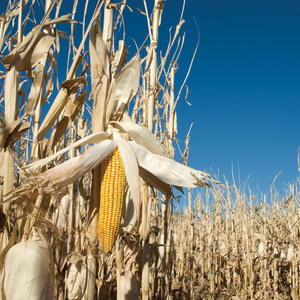USDA: Corn planted acres up 7 percent from last year

July 1, 2016
BY USDA National Agricultural Statistics Service
The U.S. Department of Agriculture’s National Agricultural Statistics Service estimates U.S. soybean planted area at a record high 83.7 million acres, up 1 percent from last year, according to the acreage report released today.
The report shows U.S. growers, aided by favorable weather conditions, increased or maintained their 2015 soybean acreage in 18 out of the 31 major producing states. In Kansas, Minnesota, and Missouri, soybean growers significantly increased their planted acres, with each state reporting 200,000 or more acres planted to soybeans this year than in 2015. Growers expect to harvest 83.0 million acres of soybeans nationally this year, which, if realized, will be a new record high.
U.S. corn growers also benefited from the excellent field conditions this year, increasing their acreage from last year by 7 percent to 94.1 million acres, making it the third highest corn planted acreage since 1944 Growers expect to harvest 86.6 million acres for grain. If realized, this will be the third highest acres harvested for grain since 1933.
Advertisement
Advertisement
Both soybean and corn growers continued to embrace biotechnology. According to the report, 94 percent of this year’s soybean acreage was planted to herbicide resistant varieties. On the corn side, 93 percent of 2016 crop was planted to biotechnology seed varieties, which include insect and herbicide resistant varieties of corn seed.
NASS also released the quarterly grain stocks report to provide estimates of on-farm and off-farm stocks as of June 1. According to this report, there are 4.72 billion bushels of corn stored in the United States, up 6 percent from June 1, 2015. Of these, 2.47 billion bushels are stored on farms, and 2.25 billion bushels are off-farms.
Advertisement
Advertisement
There are also 870 million bushels of soybeans stored in all positions in the United States, up 39 percent from the same time last year. The report shows that 281 million bushels of soybeans are stored on farms, while 589 million bushels are off farms. Off farm stocks are up 55 percent from June 1, 2015.
To gather these data, NASS surveyed approximately 11,000 segments of land and 70,500 producers during the first two weeks of June to gather information on what farmers planted. The agency collected data by mail, telephone, internet, and personal interviews to ensure all participating growers accurately report their acreage and storage information.
The acreage and grain stocks report and all other NASS reports are available online at www.nass.usda.gov.
Related Stories
The USDA significantly increased its estimate for 2025-’26 soybean oil use in biofuel production in its latest World Agricultural Supply and Demand Estimates report, released July 11. The outlook for soybean production was revised down.
U.S. fuel ethanol capacity fell slightly in April, while biodiesel and renewable diesel capacity held steady, according to data released by the U.S. EIA on June 30. Feedstock consumption was down when compared to the previous month.
The U.S. EPA on July 8 hosted virtual public hearing to gather input on the agency’s recently released proposed rule to set 2026 and 2027 RFS RVOs. Members of the biofuel industry were among those to offer testimony during the event.
The USDA’s Risk Management Agency is implementing multiple changes to the Camelina pilot insurance program for the 2026 and succeeding crop years. The changes will expand coverage options and provide greater flexibility for producers.
The USDA’s National Agricultural Statistics Service on June 30 released its annual Acreage report, estimating that 83.4 million acres of soybeans have been planted in the U.S. this year, down 4% when compared to 2024.
Upcoming Events










